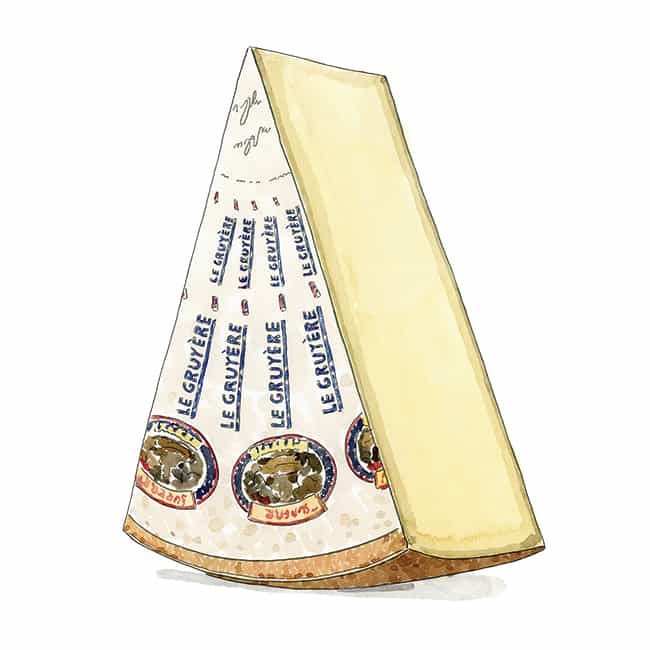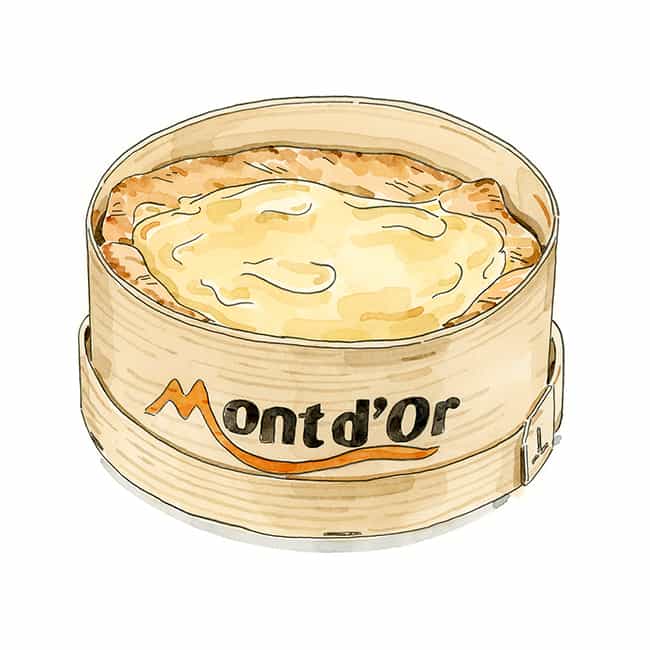
There’s great cheese nearly everywhere you look these days, whether you’re planning to summer in the south of France or ski the slopes of Canada. Over the next few weeks, we’ll take you to five popular tourist regions—the Alps, the Anglo-Celtic Isles, Australasia, Canada, and the Mediterranean—complete with recommendations for places to visit, fun facts, and of course, some of the best wedges and wheels in the area.
Picture treading through fields of knee-high wildflowers up a seemingly endless mountain path. It’s so steep that you pause at every photo op to capture the vista of endless snow-capped peaks (and your breath). There’s no better way to work up an appetite, but luckily you’ll never go hungry in the Alps. While cheeses elsewhere might serve as an appetizer or garnish, hearty mountain dishes place curds front and center, layering and mixing the golden goodness with starchy bases like bread, spätzle, polenta, and potatoes.That complete cheese devotion makes sense in a region where snowy winters and steep slopes have long discouraged plant cultivation. Instead, animal herding has driven both economy and tradition, resulting in unparalleled dairy expertise. Little huts teetering on the side of a cliff might look rustic, but inside shepherds are crafting wheels that sweep international awards. Nobody can deny that the Alps supplies a striking number of the world’s best cheeses. A visit here yields all the bountiful dairy delights you’d expect—and more.
LE GRUYÈRE AOP ANTIQUE LANGRÜTI 1862 LE SUPERBE
Lustenberger & DürstLangrüti, Switzerland
We’ve been publishing our Best Cheeses special issue for only four years—but had we been doing so for 902 years, one version or another of Gruyère AOP would probably have made the cut each time. Langrüti, Switzerland–based affineur Lustenberger & Dürst builds on expertise developed by Gruyère makers since the year 1115 to select its best wheels. Aged a minimum of 12 months, only these prime selections are granted the “Antique Langrüti” label.
FLEUR DE BREBIS
Fromagerie MolésonOrsonnens, Switzerland
Although cow’s milk cheese rules around Fribourg, Switzerland, there’s also a fair number of ewes roaming the hills, according to Moléson sales manager Marie-Cécile Crausaz. “We wanted to put that milk to use,” she says. As a result, the company developed a line of sheep’s milk yogurt, fromage frais, and a mold-ripened cheese called Fleur de Brebis. This soft cheese is a twist on the traditional tomme Vaudoise, a disk that ages about a week. Thanks to the use of ewe’s milk, Crausaz says, this version quickly becomes “creamy and oozing, with an animal taste that’s a little bit marked.”
L’ETIVAZ AOP
Coopérative des Producteurs de Fromages d’Alpages L’EtivazL’Etivaz, Switzerland
Perhaps the most old-school of Alpines, this golden raw cow’s milk wheel was the first in Switzerland to be awarded AOC (now AOP) status. Today, it’s still made only in high mountain pastures during the summer, in a copper kettle heated with a wood fire (taste that hint of smokiness?). Bonus: All the wheels made on alpages are aged together at a cooperative in the cheese’s namesake village—and it’s open to visitors.
MONT D’OR PDO
Fromageries ArnaudLongevilles-Mont-d’Or, France
We love floral, herbaceous summer Alpine milk, but winter milk has its own virtue: fat. When the season of Comté-making draws to a finish in the Jura—a gently sloping mountain range that follows the Swiss-French border—Fromageries Arnaud turns creamy winter milk from 12 local dairies into this traditional staple. Also known as Vacherin du Haut-Doubs, it’s a gooey, unctuous, savory mess held together in a robe of Jura mountain spruce bark. Alert: 2017’s first batches hit shelves September 10.
VORARLBERGER BERGKÄSE
Alma Hörbranz, Austria
First, a quick German lesson: berg means “mountain” and käse means “cheese.” This take on the region’s signature mountain cheese is made by one of Austria’s leading dairies in the Vorarlberg region near the Swiss border. There, cows graze on pasture containing over 90 species of plants, says Thomas Gasteiner, a representative of Agrarmarkt, the country’s national ag marketing organization. The resulting wheels have a rich, pungent rind that Gasteiner insists on eating. It takes at least 12 months for the rind to develop, he says, “and there is so much flavor there.”
GORGONZOLA PDO DOLCE
Arrigoni Battista Pagazzano, Italy
Due south of Lombardy’s azure Alpine lakes, the town of Gorgonzola was once a seasonal resting point for shepherds herding cows between high-altitude pastures to lowlands. The cheeses made here, colonized by a local blue mold, eventually evolved into celeb status, gaining PDO designations for two versions: firm, aged Piccante and soft, spreadable Dolce. This buttery Dolce—made in a fourth-generation caseificio (dairy)—boasts no shortage of accolades, having brought home a trophy from the World Cheese Awards for the third year in a row. Judges are continually smitten by its “creaminess and sweetness,” says Arrigoni’s export manager, Roberta Cavagna.
CAMBOZOLA BLACK LABEL
Käserei ChampignonLauben, Germany
This German wheel—a striking hybrid of a soft-ripened bloomy rind and a veined blue—is a departure from Alpine tradition. But Käserei Champignon’s proximity to the storied peaks of Bavaria has an unmistakable influence, according to marketing director Flynne Wiley. “It means an abundance of fresh water and verdant grasses,” he says—plus the use of casein-rich milk from Allgäu Original Brown Cattle, a breed with a deep local history.
FUN FACTS:
- In 2016, a World Cheese Awards silver medal was granted to Slovenian dairy Pustotnik, run by Žuža and Milan Brence and family in a mountainous region west of Ljubljana. According to Katarina Brence, one of the four siblings working in the business, “In this region cheeses are made from cow’s milk. Our dairy’s specialty is that we process three types of milk: cow, goat, and sheep.” Award-winner Kozovc ̆ is a unique cave-aged goat-sheep hybrid with a paste full of spongy holes. We’re excited to see what’s next from this Alpine up-and-comer.
- 70% of Switzerland is covered in mountains.
- Around 120 Million Tourists visit the Alps each year.





